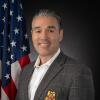When you think about projects in public safety, what comes to mind?
- Just another pet project
- A way to earn promotion
For many, project management is seen as a technical role within a corporate organization. But a shift in our thinking about how projects relate to our work as fire service professionals can transform how we work together to reach our goals and better serve our communities.
Prioritizing and planning projects
According to Antonio Nieto-Rodriguez, author of the Harvard Business Review Project Management Handbook, approximately $48 trillion is invested in projects each year, yet only 35% are considered successful. While that figure includes both public and private organizations, we can review the same reasons for why Neito-Rodriguez believes many projects struggle to avoid these pitfalls in our industry:
- Methods for the project management role need to be refreshed.
- The organization’s culture, structure, and processes need to be updated.
- Senior leaders need to invest in the importance of project managers and learn how to select the best projects for their goals while prioritizing quality over quantity.
What would it mean to our departments and taxpayers if we work to increase the success rate of our projects, even by 10%?
As more operational tasks become automated and people move to project-based roles, Nieto-Rodriguez strives to make project management skills more accessible to at every level of an organization. His model shows how we can identify projects that help us not just run the organization but also change the organization. And that change starts with senior leadership.
What do senior leaders who are successful with their projects do differently? According to Neito-Rodriquez, they dedicate time! Everyone loves to start new things. But how do we involve stakeholders and keep momentum going to achieve our goals?
Project management does not have to be technical. The Project Canvas offers a framework that is simply for any industry to implement.
Foundation Domain
- Purpose: Why are we doing the project?
- Investment: How much will the project cost?
- Benefits: What benefits will the project generate, and how will we know it is successful?
People Domain
- Sponsorship: Who will be accountable for the project?
- Stakeholders: Who will benefit from, and be affected by the project?
- Resources: Who will manage the project and which skills are needed to deliver it?
Creation Domain
- Deliverables: What will the project produce, build, or deliver?
- Plan: How and when will the work be carried out?
- Change: How are we going to engage stakeholders and manage the risks?
As fire service leaders, we should focus our efforts on the People Domain. Traditionally, we put our best people on the hardest tasks. We need to rethink how to get people excited about the work we are asking them to do. Think about the purpose of your project, and put people at the center. Align their skills and potential to that purpose, and show how they are an important part of the project’s success. One benefit to this focus is a greater emphasis on recruitment and retention as people find a deeper connection to their work and the community.
How you organize your projects also plays a large role in their success. At the Smyrna (Georgia) Fire Department, we divide our projects into four categories:
- Sustaining: Core services
- Strategic: Transformative ideas
- Efficiency: Improve and innovate existing processes
- Event: Specific planning
We use a software tool called Planner to help us keep all our projects on track. Whether we are working on accreditation, ISO or a station-specific project, we know who owns the project and the timetable, and have a place to keep all communications and documents that pertain to that project. A tagging feature allows us to communicate in real time rather than searching through email responses.
Looking ahead
Wherever approach or tools you use to implement projects in your department, there are three ideas that will go a long way to ensure their success:
- Focus on project management training and competencies at all levels.
- Keep stakeholders and taxpayers in mind.
- Be out in front of your initiatives! Your leadership and enthusiasm will inspire others to take ownership of their role in the project.
Projects are more than a way to earn promotions. They are the future of how we will accomplish our mission! Let’s embrace them with vision and confidence as we lead others in our departments to do the same.



